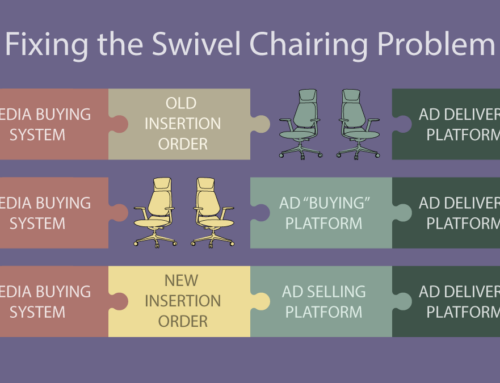What do successful Marines and Marketers have in common? You might reflexively say “very little,” but I contend that there is more than you expect. Although many marketers lack the brashness, physical endurance, and hypnotizing good looks that make most Marines successful, those who succeed in either profession share some other distinct resemblances. I know because I’ve done both, and lack all three of the criteria listed above!
For a decade after college I served as a Marine assault helicopter pilot—carrying Marines and their equipment into some pretty undesirable places. Later in my flying career, I graduated from what most military pilots would consider one of the world’s most intense and challenging aviation schools—the Marines’ Weapons and Tactics Instructor Course (like Top Gun without the volleyball and sunglasses).
Now, I sit as the head of marketing at a company that makes software for marketers (Marketing squared?!). And I’d like to share a few of the lessons that have helped me the most in both of my careers.
Never Leave Out the “Why?”
More than anything, effectively communicating “commander’s intent” is the greatest leadership advice I can give anyone in any profession. There is a theory that you must tell someone what you want them to accomplish, and never how to accomplish it. However, the most important thing you can express to your team is why their task is important.
This is a noteworthy concept for several reasons. First, the fog of war is real. In armed conflict, it feels like nothing works as it should, and the awareness that you thought you would have rapidly depletes once a campaign kicks off. Yet, even considering the lack of awareness, difficulty of communications, and dynamic situation, if your team understands your end state they will be able to operate without needing to ask for directions at each step. They will take initiative when it is most needed, and will not become paralyzed by dynamic and rapidly changing situations.
For marketers, there is an important concept concerning commander’s intent: you must clearly communicate what you are trying to accomplish and why it is so important to everyone on your team. Your marketing strategy brief is vital, and you need to make sure that everyone understands both the desired results and the why behind your instructions. If you try to control every aspect of creative, media, PR, and distribution, and still try to think strategically, you will fail miserably. Furthermore, there just may be some people around you that are better at their job than you are at theirs’. Trust people to make the right decision. They may make mistakes occasionally, but you’ll be amazed at what people can accomplish if they know what you are trying to achieve.
Work from the Objective Backward
Normally, the most dynamic place on the battlefield is what military planners call, “the objective area.” This is where all the action happens, and where there is the highest chance for success or failure based on your actions. This is where we land to insert Marines, drop off that critical piece of cargo, or plan to go head-to-head with our enemy. We say to plan backwards because although failure can happen anywhere during the mission, success cannot be achieved unless things go right at the objective.
For marketers, this is about setting the right key performance indicators (KPIs), and focusing on what you really need to declare victory.
For military planners, these metrics are often simple to calculate and understand, but for a marketer, it can be a lot murkier. It’s easy to sit at our computers and start crunching numbers on reach, frequency, impressions, and clicks, but without having a deep understanding of the end state none of these metrics really mean much. Often, we put far too much emphasis on metrics that don’t matter. The most common reason we do this is because many of the less important metrics are the easiest to calculate and track.
In many cases, starting at product purchase and moving backwards through the customer’s journey provides a better understanding of the inflection points and drivers that contribute to their decision to purchase. Working this way also uncovers the insights necessary to come up with relevant KPIs. Finally, KPIs start becoming applicable to achieving your goals.
By working backwards, you are able to decide what you need to measure, and how to measure it before your ad campaign begins. You can build in tests and decide on different branch plans before your campaign starts overspending or underperforming. Being proactive rather than reactive, empowers you to spend time thinking about what matters most—how to achieve your objective.
Lead from the Bottom
There is a concept that the best leaders are “servant leaders.” As the name suggests, a servant leader puts the needs of their subordinates first and strives to help them perform as highly as possible. Rather than viewing subordinates as working for them, the servant leader works for their subordinates.
The greatest example of this is the Marine Corps’ mantra that “officers eat last.” Whenever a meal is served to Marines, you’ll always find the highest-ranking officer at the back of the line. If food runs out, the higher-ranking officers go hungry while the other Marines get the nutrition they need to perform. This speak volumes, not just about how we treat each other, but also about priorities. By shifting from an autocratic (leader eats first) leadership style, servant leaders unlock ingenuity and purpose in those around them. They inspire and equip the people they lead, and focus their effort on ensuring their success.
In practice, this concept has exponential returns. The people on your team will feel inspired, purposeful, and empowered. Rather than working to satisfy you, they work to achieve their own goals, and as a result, work to make you, their leader, successful without feeling like they are working for “The Man” (or Woman). More than anything, it creates a powerful culture that is based on the concept that everyone matters, and the lowest person on the organizational chart normally needs the most nurturing.
Marketing is hard. It’s competitive, difficult to measure, and thankless. If your team of designers, planners, and analysts are not driven to do good work every day, it doesn’t matter how great of a brand manager you are. By spending more time focusing on the needs of your team members, and less time making demands, your will grow an incredibly creative and effective organization. I’ve seen leaders with terrible tactical skills lead amazingly successful organizations, and the common denominator was the servant leadership culture that permeates their ranks.
Celebrate Success and Learn from Failure
The Marine Corps may be the best PR machine in our nation’s history. Not because we do PR training, or spend gobs of money on PR. It’s because we talk about the battles we have won, and we embrace the opportunities to take credit for what we have earned. We hold ourselves to a higher standard, and we make that standard known to everyone around us. Marines work hard, and play even harder.
When your marketing team crushes it, reward them. Let them know how much you value their time and effort. Let the rest of your company know how good your team really is.
Alternately, when you miss the mark (which believe it or not, Marines sometimes do), embrace that failure and learn from it. Most successful leaders will tell you that their biggest hurdle in their journey from worker to leader was allowing their subordinates to make mistakes. Mistakes are essential to learning, and a zero-defect culture is a breeding ground for teammates with no initiative or capacity for taking risks.
One of my most fond memories of flying is meeting in the Ready Room after each flight (often with a cold beer in hand), and making a list on the whiteboard of every error we made during the planning, briefing, and execution phases. Most pilots keep a separate notebook dedicated to recording the lessons that have learned in these meetings.
To enable this culture, you must NEVER be a boss that takes bad news poorly. Be stoic, thank the messenger for telling you, and conduct a post-mortem on what happened. Don’t sweep failures under the rug, or try to forget about it. Get to the root cause, and make sure your team knows that it is a learning experience and that whatever caused the failure should never happen again. People around you are going to make mistakes. With years more experience, you may be able to do their job better and faster than them. However, you are stunting their growth, and crippling the members of your team. If you are too critical of mistakes, you will never engender trust or be able to develop the future leaders of your company. Just pray that the errors are small, and realize that to get where you are, you probably made a few mistakes along the way, too.





